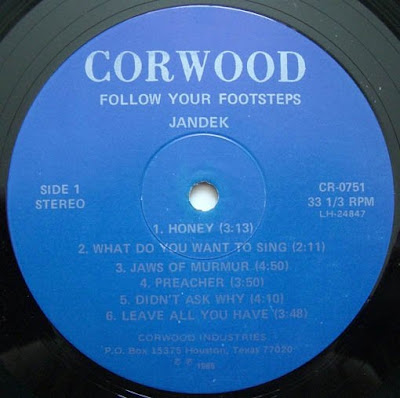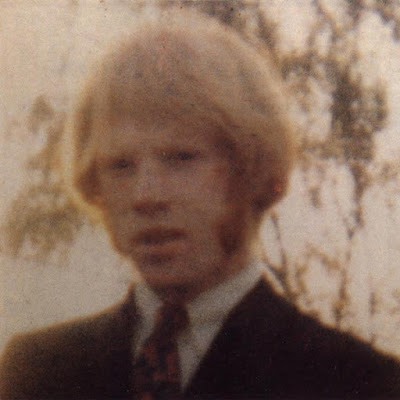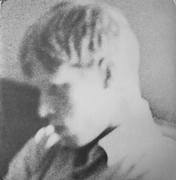 |
| Outside of Vancouver, WA Go 'n Joy store, circa 1981. Image: WSU Libraries Digital Collection |
As well as the inside of it. They made fresh deli sandwiches, had a full selection of potato chips, beer, candy and soda. As well as various other quick must-buys like milk, bread and eggs. They had a cold soda/Icee fountain. There were a couple of arcade video games in the front of the store. Pretty average stuff for a convenience store chain in 1981.
Nothing really seemed out of the ordinary. Except that this chain literally went from idea to 17 locations that sprang up within a period of a few months in western Washington State in early 1981 (something even your most ambitious retail chain doesn't do.) They had further plans of expansion of up to 30 stores at this time.
What are these places?, people began to ask. And how did they get so big, so fast? It seemed pretty strange. But nothing to be concerned over really, just odd.
The Washington State Liquor Control Board wanted to know too, as they were licensing each store for beer and wine sales (Hard liquor was still sold in state-run liquor stores at that time.) Their concern was knowing who actually owned the chain.
But after wandering through a maze of various shell companies and people who seemed to change positions within the company on a dime, the investigations revealed one common link; the various operatives of Go 'n Joy, from distributors to several franchise operators revealed ties to Rev. Sun Myung Moon and his Unification Church.
The Unification Church is a religion with a large worldwide membership (known as "Moonies"), but is still considered a cult by many. But this was a cult with a difference. While most cults were considered dirty Commie free-love hippies who are against capitalism by most people in post 1960s America, the Unification Church not only embraced capitalism, but made it front and center in it's various operations. They hated Communism. Members were clean and upstanding people.
One of my neighbours was a Moonie. He drove a nice car and owned a restaurant. At no time during my first two months of knowing him had I ever suspected he was a Moonie. But one day, religion snuck into our conversation and he casually mentioned he was a member of the Unification church. I wasn't upset or nervous about it. He didn't try to convert me. It was his thing, not mine.
But alternative religions were not looked upon kindly in 1981. We were a nation still in shock over the 1978 People's Temple mass suicide and anti-cult groups sprang up for families to "deprogram" other family members who were inducted into them.
The revelation of this chain being owned by the Moonies led to assorted accusations of the true intent of Go 'n Joy stores. Some parents believed the Unification Church was actively using the store chain as a front to lure young people into the religion.
While many young people (including myself at that time) occasionally stopped at a Go 'n Joy for a burrito and a soda, maybe played a video game, no one there ever gave me any leaflets. Nor do I remember seeing any. No one there ever asked me if I heard of Reverend Moon, that kind of thing. They wouldn't have lasted ten minutes if they did in that more religiously partisan time.
Unable to control the negative publicity, the Go 'n Joy chain was quietly sold. Some locations were sold to 7-Eleven, which used some locations as expansion outlets for their then recent acquired Hoagy's Corner chain of deli/convenience stores. Others to independent operators. In 1982, Rev. Moon was convicted of tax fraud and sentenced to 18 months in federal prison.
The Unification Church still owns lots of businesses. But today, the same outrage there was in 1981 doesn't exist now as people today are less concerned with the religion of a business operator and more eager for a good deal.
Rev. Sun Myung Moon passed away in 2012.
What are these places?, people began to ask. And how did they get so big, so fast? It seemed pretty strange. But nothing to be concerned over really, just odd.
The Washington State Liquor Control Board wanted to know too, as they were licensing each store for beer and wine sales (Hard liquor was still sold in state-run liquor stores at that time.) Their concern was knowing who actually owned the chain.
But after wandering through a maze of various shell companies and people who seemed to change positions within the company on a dime, the investigations revealed one common link; the various operatives of Go 'n Joy, from distributors to several franchise operators revealed ties to Rev. Sun Myung Moon and his Unification Church.
The Unification Church is a religion with a large worldwide membership (known as "Moonies"), but is still considered a cult by many. But this was a cult with a difference. While most cults were considered dirty Commie free-love hippies who are against capitalism by most people in post 1960s America, the Unification Church not only embraced capitalism, but made it front and center in it's various operations. They hated Communism. Members were clean and upstanding people.
One of my neighbours was a Moonie. He drove a nice car and owned a restaurant. At no time during my first two months of knowing him had I ever suspected he was a Moonie. But one day, religion snuck into our conversation and he casually mentioned he was a member of the Unification church. I wasn't upset or nervous about it. He didn't try to convert me. It was his thing, not mine.
But alternative religions were not looked upon kindly in 1981. We were a nation still in shock over the 1978 People's Temple mass suicide and anti-cult groups sprang up for families to "deprogram" other family members who were inducted into them.
The revelation of this chain being owned by the Moonies led to assorted accusations of the true intent of Go 'n Joy stores. Some parents believed the Unification Church was actively using the store chain as a front to lure young people into the religion.
While many young people (including myself at that time) occasionally stopped at a Go 'n Joy for a burrito and a soda, maybe played a video game, no one there ever gave me any leaflets. Nor do I remember seeing any. No one there ever asked me if I heard of Reverend Moon, that kind of thing. They wouldn't have lasted ten minutes if they did in that more religiously partisan time.
Unable to control the negative publicity, the Go 'n Joy chain was quietly sold. Some locations were sold to 7-Eleven, which used some locations as expansion outlets for their then recent acquired Hoagy's Corner chain of deli/convenience stores. Others to independent operators. In 1982, Rev. Moon was convicted of tax fraud and sentenced to 18 months in federal prison.
The Unification Church still owns lots of businesses. But today, the same outrage there was in 1981 doesn't exist now as people today are less concerned with the religion of a business operator and more eager for a good deal.
Rev. Sun Myung Moon passed away in 2012.






















































